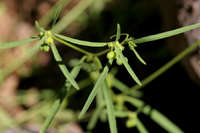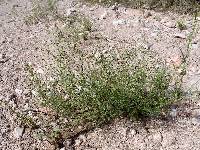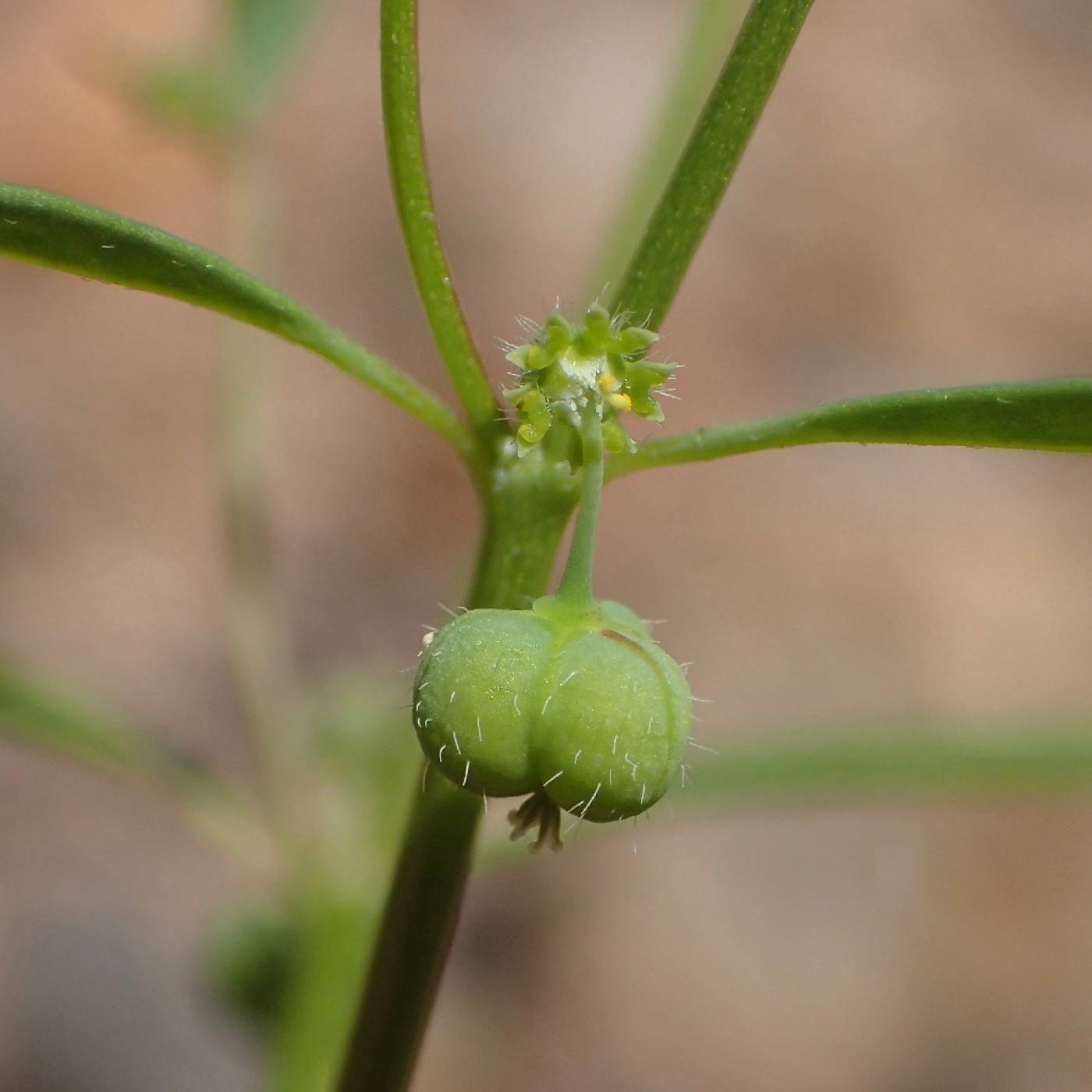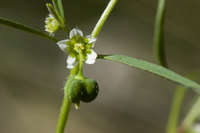|
|
 Leaves and fruit Patrick Alexander @http://swbiodiversity.org, Usage Rights: Creative Commons Attribution-ShareAlike (CC BY-SA) |  Plant Sue Carnahan @http://swbiodiversity.org, Usage Rights: CC BY-NC (Attribution-Non-Commercial) |  Fruit Sue Carnahan @http://swbiodiversity.org, Usage Rights: CC BY-NC (Attribution-Non-Commercial) | | | |
|
Origin:
Native
Life Cycle:
Annual
General Desc:
Slender, erect, short, soft hairs; usually arising from single stem, much branched, stems branching in 2s; narrow, smooth leaves; flower clusters of 5 small bracts, 5 nectar glands, 5 male flowers around single female flower; white petal-like appendages.Â
Identification notes: Abundant in wet years, slender erect annual; flower clusters of 1 female, 5 male flowers, white, triangular petal-like appendages, deeply 2-lobed, green glands; leaves to 2 inches long, ends narrow, margins smooth, opposite, stipules gland-like.
Height:
8 to 16 inches
Habitat Description: Sandy and rocky soils on slopes and canyon bottoms in pine-juniper woodlands, oak woodlands, grasslands, creekbeds and on moist slopes.
Plant Communities:
Interior Chaparral, Semidesert Grasslands, Pinyon Juniper Woodland, Riparian
Elevation: 3500 - 6000 feet
Color:
White
Shape:
Regular in round clusters
Tubular:
N
Flowering Period:
Aug - Oct
Description:
Flower clusters at leaf nodes, 5 bracts form a cup-like base which contains 5 nectar glands, 1 female flower surrounded by 5 male flowers; white petal-like appendages, twice as long as glands, bilobed (deeply 2-lobed), divided in 2 parts at base.
Leaf Color:
Green
Leaf Type:
Simple
Leaf Shape:
Narrow
Leaf Margin:
Smooth
Leaf Attachment:
Opposite
Leaves Clasp:
N
Hairs:
Leaves and stems
Spines:
N
Leaf Description:
Opposite, narrow with pointed tip, smooth margins without teeth, 1/4 to 2 inches long; top of leaf sparsely covered with stiff bristles to fine, silky hairs; bottom surface usually smooth; no venation, only midvein conspicuous.
Fruit Color: Green
Fruit Type: Capsule
Fruit Notes: Smooth capsules.
Seed Notes: Seeds brown to grayish-black, narrowly egg-shaped, 3- or 4-angled in cross section, sometimes obscurely so, tuberculate (covered with warts), often with shallow depressions.Â
|
|



